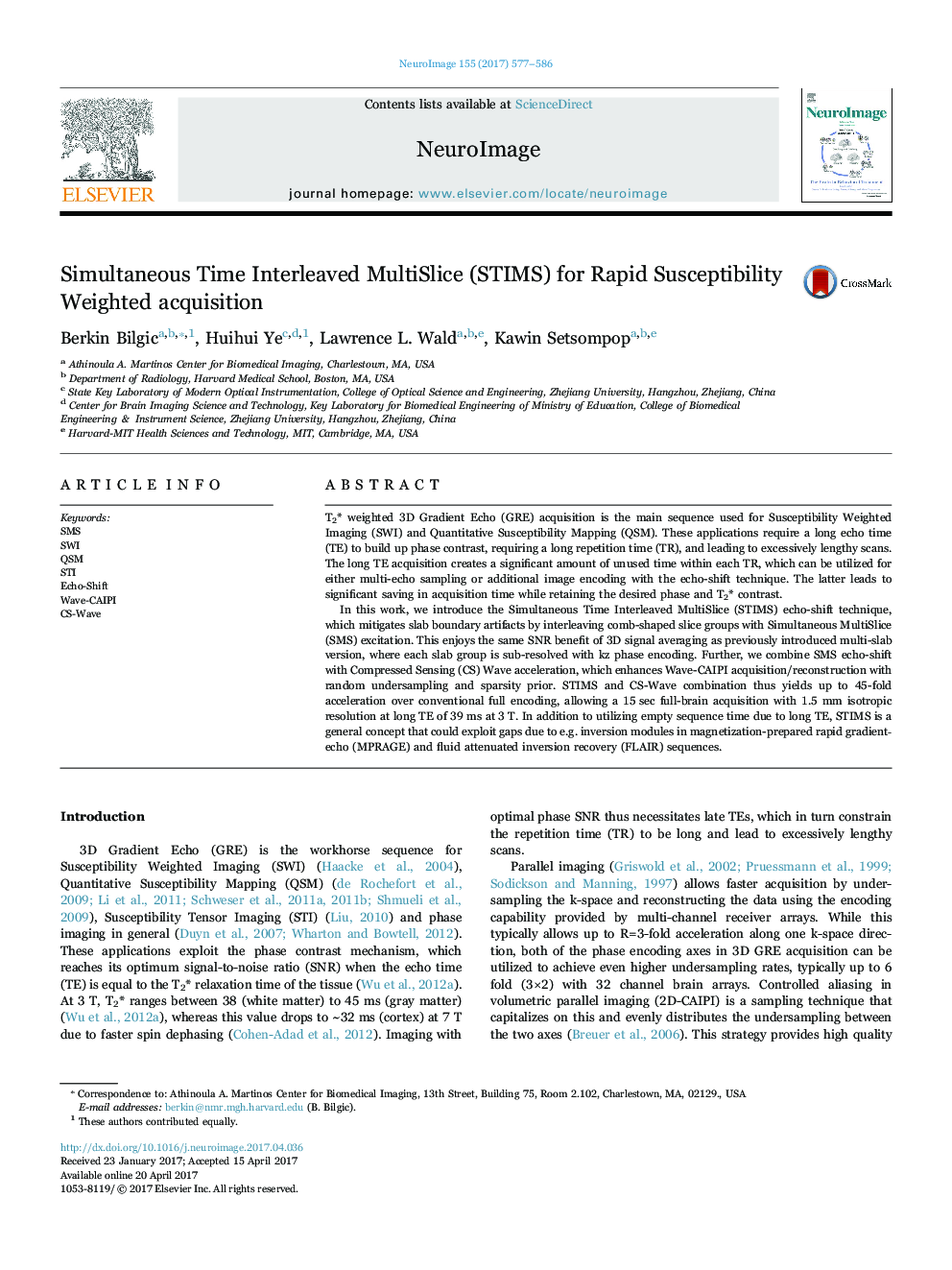| Article ID | Journal | Published Year | Pages | File Type |
|---|---|---|---|---|
| 5631162 | NeuroImage | 2017 | 10 Pages |
â¢STIMS exploits unused time in long TE scans for extra encoding using SMS echo-shiftâ¢Compressed Sensing (CS) Wave harnesses sensitivity encoding and sparsityâ¢Combination of STIMS with CS-Wave allows 45-fold accelerated 3D-GREâ¢STIMS is a general concept that could improve efficiency in e.g. MP-RAGE and FLAIR
T2* weighted 3D Gradient Echo (GRE) acquisition is the main sequence used for Susceptibility Weighted Imaging (SWI) and Quantitative Susceptibility Mapping (QSM). These applications require a long echo time (TE) to build up phase contrast, requiring a long repetition time (TR), and leading to excessively lengthy scans. The long TE acquisition creates a significant amount of unused time within each TR, which can be utilized for either multi-echo sampling or additional image encoding with the echo-shift technique. The latter leads to significant saving in acquisition time while retaining the desired phase and T2* contrast.In this work, we introduce the Simultaneous Time Interleaved MultiSlice (STIMS) echo-shift technique, which mitigates slab boundary artifacts by interleaving comb-shaped slice groups with Simultaneous MultiSlice (SMS) excitation. This enjoys the same SNR benefit of 3D signal averaging as previously introduced multi-slab version, where each slab group is sub-resolved with kz phase encoding. Further, we combine SMS echo-shift with Compressed Sensing (CS) Wave acceleration, which enhances Wave-CAIPI acquisition/reconstruction with random undersampling and sparsity prior. STIMS and CS-Wave combination thus yields up to 45-fold acceleration over conventional full encoding, allowing a 15Â sec full-brain acquisition with 1.5 mm isotropic resolution at long TE of 39 ms at 3Â T. In addition to utilizing empty sequence time due to long TE, STIMS is a general concept that could exploit gaps due to e.g. inversion modules in magnetization-prepared rapid gradientâecho (MPRAGE) and fluid attenuated inversion recovery (FLAIR) sequences.
Graphical abstractDownload high-res image (318KB)Download full-size image
